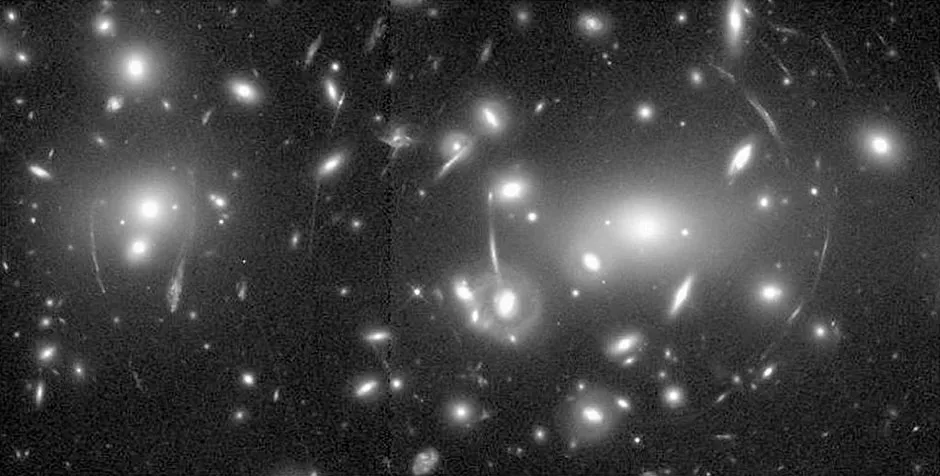Astronomers have found a new way to see the elusive dark matter haloes that surround galaxies, new research suggests.They say the new technique is 10 times more precise than the best previous method.
Scientists estimate that up to 85 per cent of the mass in the Universe is effectively invisible. This dark matter cannot be observed directly because it does not interact with light in the same way as the ordinary matter that makes up stars, planets and life on Earth.
So in order to measure what cannot be seen, scientists analyse the dark matter’s effect on gravity.
“It’s like looking at a flag to try to know how much wind there is," said Pol Gurri, a PhD student at Swinburne University of Technology, Australia, who led the research.“You cannot see the wind but the flag’s motion tells you how strongly the wind is blowing.”
Read more about dark matter:
- Desperately seeking dark matter: the search for 95 per cent of the Universe
- Wild ideas in science: Dark matter might be under our feet
The new research, published in Monthly Notices of the Royal Astronomical Society, looks at an effect called weak gravitational lensing – a feature of Einstein’s general theory of relativity.
Associate professor Edward Taylor, also at Swinburne University of Technology, said: “The dark matter will very slightly distort the image of anything behind it. The effect is a bit like reading a newspaper through the base of a wine glass.”
While weak gravitational lensing is already one of the most successful ways to map the dark matter content of the Universe, the Swinburne team has now used the ANU 2.3m Telescope in Australia to map how gravitationally lensed galaxies are rotating.

“Because we know how stars and gas are supposed to move inside galaxies, we know roughly what that galaxy should look like,” Gurri said.“By measuring how distorted the real galaxy images are, then we can figure out how much dark matter it would take to explain what we see.”
The new research shows how this velocity information enables a much more precise measurement of the lensing effect than is possible using shape alone.
Researchers hope their new way of seeing dark matter will help to create a clearer picture of what role it plays in the formation of galaxies.
“We have shown that we can make a real contribution to these global efforts with a relatively small telescope built in the 1980s, just by thinking about the problem in a different way,” Dr Taylor said.
What is dark matter?
Over 80 per cent of the matter in the Universe is made up of this stuff, but despite its name it can’t simply be made up of dead stars, gas and dust. Dark matter has to consist of something more exotic than standard atomic particles to ensure the Big Bang produces a universe chemically similar to the one we see.
Such observational constraints have forced theorists to focus on a handful of candidates for dark matter.
The main contenders include so-called weakly interacting massive particles (‘WIMPs’) and gravitinos, whose existence is predicted by theories aimed at unifying all the fundamental forces and particles of nature, andaxions,predicted to exist by theories of howatomic nuclei hold together. Experiments now underway at the Large Hadron Collider could soon reveal the truth.
Read more: